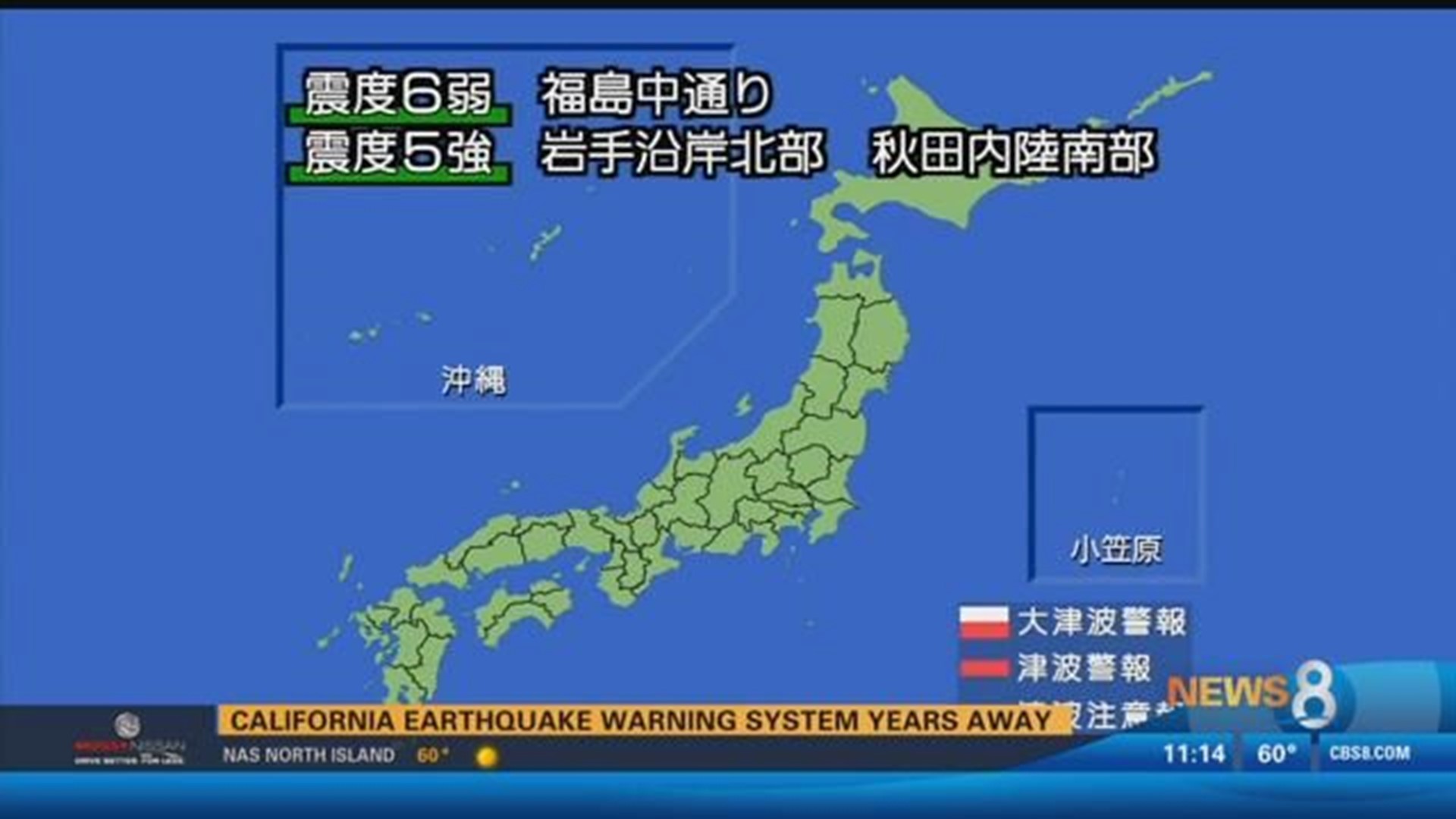LA JOLLA, Calif. (NEWS 8) -- It’s no secret that California is in an earthquake zone. So, why don't we have an earthquake early warning system?
Scientists say we need one and they're hoping it gets built before the big one hits.
Mexico has an earthquake early warning system. In September, sirens went off about 20 seconds before the 7.1 quake hit Mexico City.
Japan has an earthquake early warning system, too. The alerts broadcast over television, radio and smartphones.
But in California, our early warning system is still about three years away. Early testing is set for the end of 2018.
The working name is Shake Alert. It’s a state-of-the-art system that relies on seismic sensors like the one on the top of Mount Soledad, which can beam earthquake vibrations back to UCSD in 1.5 seconds.
“We have radio communications so we can go from the site to the UCSD campus. It then goes through the internet and to the early warning systems,” said Frank Vernon, a seismologist at Scripps in La Jolla.
But to have a fully operational early warning system, California needs about 1100 of the seismic stations like the one on Mount Soledad. Currently, the state only has about half that number.
Vernon says we also need a much faster cell phone network.
“How many times have you sent a text to somebody nearby and waited for minutes for that text to get there? The technology needs to evolve to the point where we can actually push out these notifications in a timely manner that's effective,” said Vernon.
Internet and cell phone networks need to be able to handle earthquake alerts in a matter of milliseconds.
Right now they can't, according to the state's Office of Emergency Services (OES).
“In Japan, it's sent through a notice that's already built into your phone. So, we're working with the wireless industry to set up our specifications for California,” said Ryan Arba, an earthquake program manager with OES.
California's early warning system reportedly will cost $38 million to build and $16 million per year to maintain.
“We're not going to stop the earthquakes,” said Vernon. “They will occur but we can make building safer and we can make the people safer.”
Once the system is built, San Diegans would get up to a 60-second warning of a quake that originates on the San Andreas Fault near the Salton Sea.
If the epicenter of the quake is closer, however, the advance warning time would be shorter.

